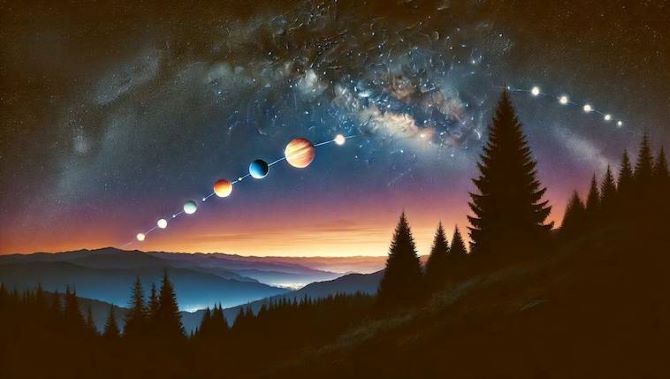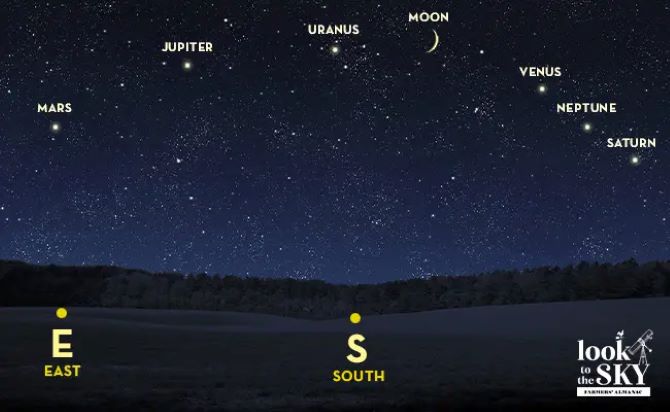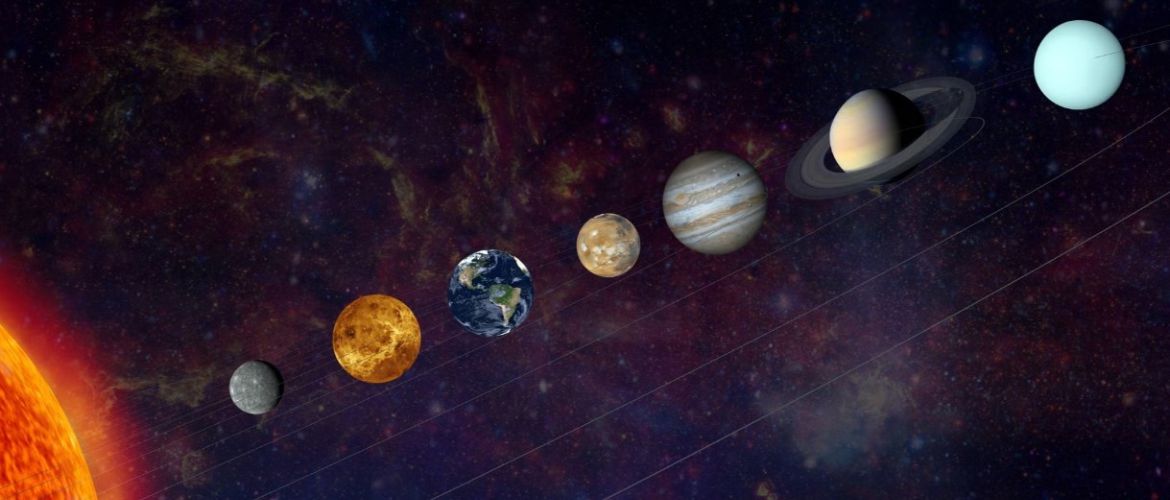The year 2025 will begin with an impressive event for astronomy enthusiasts — a planetary parade that will take place in the first month of the new year. A planetary parade occurs when several planets of the Solar System are visible in the night sky at the same time. In January and February 2025, six planets will form a giant arc in the evening sky: Mars, Jupiter, Uranus, Venus, Neptune, and Saturn. In March, Mercury will join them.

What is a planetary parade?
There are several types of “planetary parades,” distinguished by the number of objects involved and the angular distance between them on the celestial sphere.
- Grand planetary parade: All planets of the Solar System participate, but the actual “alignment” is a conditional concept. Most often, it means that all planets are on the same side of the Sun within a certain sector (e.g., 180°).
- Minor planetary parade: 4-5 planets are visible at the same time, positioned in a relatively narrow sector of the sky, creating a visual impression of a “chain” or grouped arrangement.
- Partial planetary parade: When three or more objects are in similar positions, often including the Moon (its inclusion in such groupings may also be called a “planetary parade” if it adds to the spectacle).
Phenomena where several planets converge in a narrow sector of the sky happen quite regularly — about once every few years, small “parades” of 3-4 planets can be observed. However, full alignments involving most planets (5-6 or more) are rare and can attract heightened interest from astronomy enthusiasts.
Which planets will participate in the 2025 parade?

On January 21, 2025, in the evening and early morning hours (depending on the time zone and geographical location), several planets will be visible on a relatively small section of the celestial sphere. The exact configuration may vary depending on latitude, longitude, the moment of observation, and visibility conditions.
Mars will kick off the planetary parade as it will be visible from Earth on January 13, 2025. Venus, Jupiter, and Saturn will also march across the night sky. The peak of the event is expected to occur on January 21, 2025. This configuration will also include more distant planets — Uranus and Neptune — but they will not be visible to the naked eye. Observing them will require a telescope, as well as knowledge of their exact position.
Unlike previous parades, this one will last quite a long time, as the planets will be positioned favorably in the sky. All six planets will be visible every night until the last week of February.
In March 2025, Mercury will join the already formed group of planets, making the event particularly notable. Also, if lucky, the Moon may adorn the night sky, enhancing the spectacle of the parade. The optimal time for observation will be after sunset, with March 8 being the peak day of this astronomical phenomenon.







Only registered users can leave comments